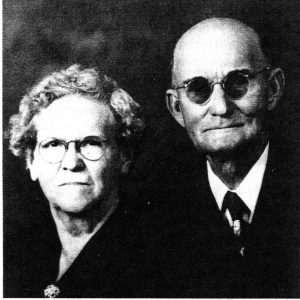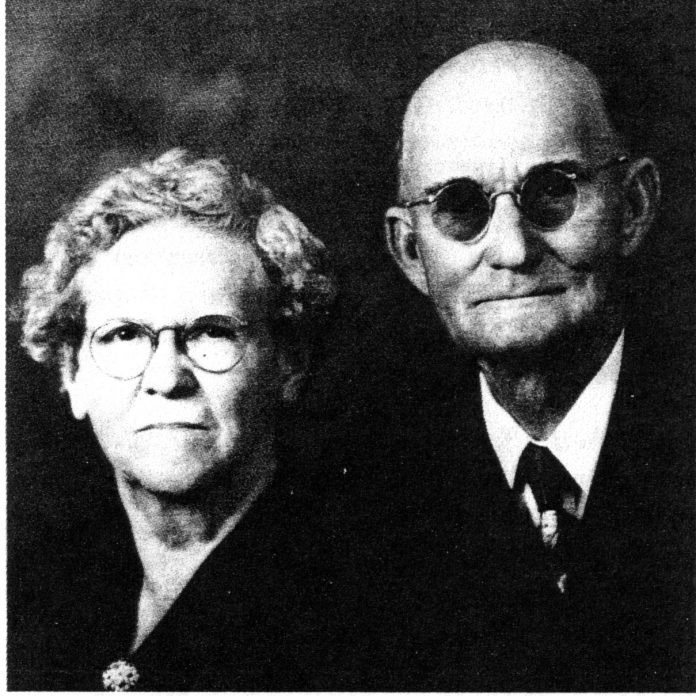
By Jim Morriss, Contributing Writer
There is a road in our area that is causing a lot of turmoil. Gerault and Morriss are really one continuous road that starts at the southern edge of Denton County and delivers its traffic to the southern bank of Lake Lewisville. Flower Mound is eager to consummate plans to expand the highway to six lanes. Residents who live nearby are just as determined to stop those plans. Rather than rehash the pros and cons of this project, last month we made an attempt to explain why those names were chosen for the road. We detailed the Gerault family and their contribution to our area’s history. It is also important to remember the people for whom Morriss Road is named.
Back in the middle of the 19th century, a man named Carlton Morriss and his wife Mary were raising their family in Barren County, Kentucky. They were farmers, as were most of the people in the U.S. at that time. Carlton and Mary had two sons and two daughters that we know of. John was born in 1844, Amanda in 1846, James in 1848 and a little girl that they called America Morriss in 1852. Mary died two years later at the age of 30. It is possible that Carlton died around this time as well. We do know that rural people were having problems with typhoid fever in the mid 1850’s.
After the Mexican-American War, there were several residents of Barren County, Kentucky who became interested in the new State of Texas. One of them, William E. Bates, was a Methodist Minister who in 1851 moved his family to the eastern edge of Denton County. Reverend Bates was an indefatigable, circuit riding preacher who wrote to several of his old neighbors in Barren County and convinced many of them to join him in Texas. The colony was first called the “Kentucky Settlement” and later became known as the “Hawkins Settlement.” Among the Kentuckians who came to Texas were Frank and Melissa Ready and their nephews, John and James Morriss, the sons of Carlton and Mary. Frank was the brother-in-law of Carlton Morriss and Melissa was the niece of Rev. Bates.
James Henry Morriss was born in Barren County, Kentucky in 1848. Along with his older brother, John, Jim came to Denton at a time when our area was a raw wilderness. John was about 10 years-old and Jim was 6 when they became Texans. Life here was incredibly difficult. Kids either grew up fast or they died young and it appears that the Morriss brothers did the former. We know that they moved down to Dallas which at that time was not much, if any, bigger than the town of Denton. They worked at whatever odd jobs they could find. Jim became a store clerk and then got a job hauling freight, especially logs, in from East Texas. It would appear that Jim was able to do much better than just eke out a meager living. Sometime around 1875, he met and married a Texas girl named Susan Adeline Keene.
Susan, or Addie as she was usually called, had even deeper Texas roots than Jim Morriss did. Her grandfather, Abner Keene, received an original 640 acre land grant on Duck Creek in what is now Garland. Abner was a Methodist Minister and it has been said that this influential family donated the land on which the First Methodist Church in Dallas was built. Jim worked as a farmer and carpenter in Dallas County to support his growing family. Addie had eight babies that we know of. There was Carlton (1876), Andrew (1877), Lavenia (1880), Effie May (1882), John (1885), Leon or L.L. (1887), Georgia (1890), and Laura Ann (1893.) We know that Jim kept his association with his old friends at the “Hawkins Settlement” back in Denton County. The family must have been doing well in Dallas County, but by 1880 they decided to move back to the Denton area.
As his family was growing, Jim was starting to buy and sell land, including lots in the town of Lewisville. On one day in 1882 he was able to buy (at a sheriff’s auction) a 200 acre farm on Hickory Creek where I-35E now crosses the lake. That same day he managed to sell all of it for twice what he paid. It does not seem however that anyone in the Morriss family was trying to earn a living in real estate. Their biggest motivation was to trade up to more and better farm land. They were also establishing very strong relationships with their neighbors, many of whom would one day become in-laws. In 1894, Jim and Addie purchased 85 acres that would become the family homestead for many years. The land was situated just to the north of FM407 and just west of I-35E in what is now Highland Village.
As the kids grew older, they married but still remained a close knit family. Carlton, the oldest boy, died in 1889 at the age of just 13. Andrew married a girl named Etta Crawford, who was the daughter of William Crawford, a farmer from Kentucky who had lived just south of the Morriss place for many years. Etta usually went by the odd nickname of, “Dump.” Lavenia, the oldest daughter, married a man named William Simmons, a farmer from Alabama. Effie May Morriss married a man named William S. Gaston. John married a girl named Lella Kinningham and L.L. Morriss married Onnie May Graham. Georgia Morriss married R.E. Douglas, and the youngest child, Laura Ann married Lee Olin Kerr. In 1898, Addie died just a few days before her 43rd birthday. She is buried in the Old Hall Cemetery, as are many in this extended family.
Growing farm families always need more good land to grow more crops. In 1902, Jim and Andrew bought a 60 acre parcel on Timber Creek just to the north of what will soon be the Flower Mound River Walk. Other family members bought and sold land in this area but most of this 60 acre plot remained the home place of Andrew and “Dump” for the next 75 years. What we now call Morriss Road was once their driveway. They raised wheat, cotton, cattle and peanuts there as well as all of the vegetables that a big family can eat.
”Dump” Crawford Morriss must have been an incredible woman for the time she lived. She grew up on a farm which would 75 years later become a part of Flower Mound. She had three sisters and five brothers and attended the college that would eventually become UNT, just a few years after its inception. “Dump” had seven children and was no doubt a large part of the reason for the success of her husband Andrew. Her kids were: Effie (1901), Alma Fay (1904), Lillian (1906), James (1909), twin girls named Alta and Ray (1913), and a baby that died shortly after birth in 1916. “Dump” Crawford Morriss died in 1968 and Andrew died just eight months later.
James Morriss, the son of Andrew and “Dump”, married a girl named Leo Mae Pilgrim and farmed with his father for several years. They bought a 128 acre farm just west of, what would one day become, Flower Mound High School. There are too many members of this “Old Settler” family to give a complete listing and several of them still are living here. It does explain why there is a Morriss Road with its unusual spelling.
Questions frequently arise about the spelling of the name “Morriss.” Only about 2% of the people with my name spell it with two “S’s” at the end. My own family was not related to the ancestors of Andrew and James H. Morriss, but we all have stubbornly refused to shorten our last name. It is said to have its origin in Wales and the double “S” is the Welch spelling. Those with loyalties to the English monarchy spelled it with just one “S.” The distinction was much more important during the Revolutionary War and the War of 1812. The strong resistance to dropping the second “S” is an unyielding statement that we are Welch, Irish, Scottish or American but not English.
Contact Jim Morriss at 817-491-4201 or [email protected].















 GIF.gif)


